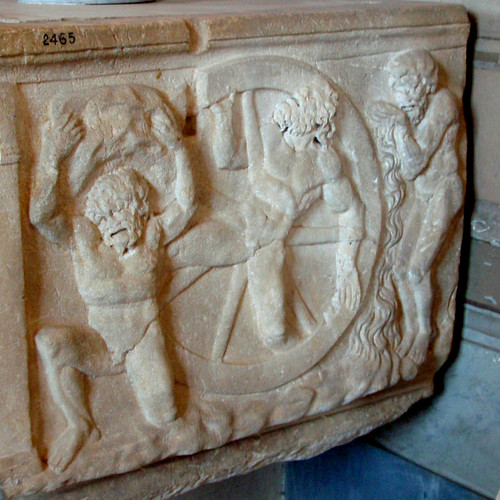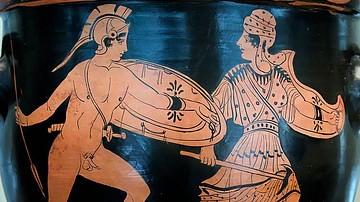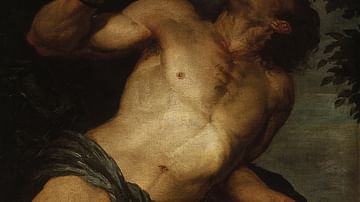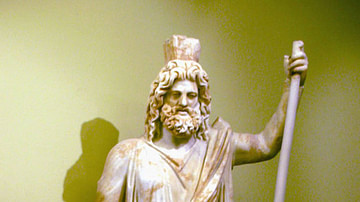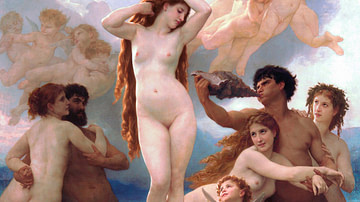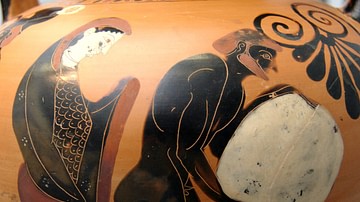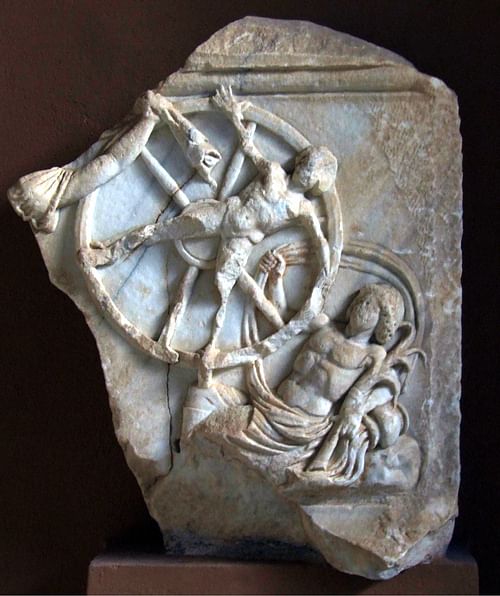
Ixion is the fiendishly wicked king of the Lapiths from Greek mythology. In an attempted seduction of Hera, he was tricked by Zeus into making love to a cloud instead, from which was born Centaurus, the founder of the race of centaurs. Ixion's eternal punishment for his audacity and complete disrespect for both humanity and the gods was to be tied to an ever-spinning wheel of fire in Hades.
Ixion & Eioneus
Ixion was the son of Phlegyas and king of the Lapiths, an ancient tribe in Thessaly. He promised to marry Dia, the daughter of Eioneus, but in order to avoid paying the handsome bridal gifts he had promised her father, Ixion decided to do away with him instead. Inviting Eioneus to a banquet at the Lapith palace, Ixion had prepared a trap by digging a concealed pit, at the bottom of which was a charcoal fire. Everything went to plan and the unsuspecting Eioneus fell into the pit and was duly burned to death. The gods were outraged at this terrible act, but Zeus, for reasons known only to himself, took pity on Ixion and offered to absolve him of his guilty crime with a dinner invite to Mt. Olympus thrown in.
Ixion & Zeus
Ixion was only too happy to be a guest of the gods, but being a thoroughly bad character, he would not be on his best behaviour. The king had his heart set on wooing Hera, queen of the gods and wife of Zeus. Zeus, knowing all, pre-empted Ixion's seduction by creating a cloud which looked just like Hera. Ixion falling for the ruse, made love to the cloud, and from this union, Centaurus was born, he who would later create the race of centaurs. Ixion, back amongst mortals, was said to have boasted to all and sundry that he had slept with Hera. Zeus now unleashed a full set of punishments on Ixion. First, he was repeatedly lashed by Hermes until he repeated the phrase 'benefactors deserve honour' as if he meant it. Then he was tied to a flaming wheel (perhaps the Sun) which was sent to spin forever through the heavens. In later tradition, this was changed to Hades, or perhaps the wheel and its cargo just ended up down there eventually. In an epilogue and to complete Zeus' revenge, in Homer's Iliad it is mentioned that Zeus fell in love and slept with Dia, producing Peirithous, the future king of the Lapiths at whose wedding the Centaurs would famously run amok.
Ixion in Art
Ixion appears on several red-figure Greek cups where he is shown captured by the Furies, or, in the case of a c. 450 BCE red-figure kantharos, held by Hermes and Ares while about to learn his fate from Hera and with Athena in the background with the wheel at the ready. Alternatively, he is depicted spinning away on his wheel. An example of the latter scene is a c. 500 BCE red-figure cup now in the Museum of Art & History in Geneva. Interestingly, the figure is here tied to a wheel not with rope but snakes. That the myth travelled beyond the shores of Greece is evidenced in an Etruscan scarab which carries an engraving of the wicked trickster. It dates to the early 5th century BCE and is now in the British Museum, London. Ixion also appears on a Roman sarcophagus along with those other infamous evil-doers who likewise received eternal punishments from Zeus: Sisyphus and Tantalus. Dating to 160-170 CE, it is now on display in the Vatican Museums, Rome.
